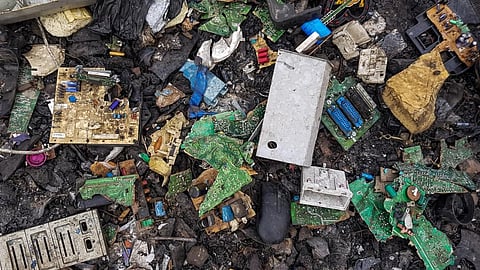International E-Waste Day: Why India needs to step up its act on recycling
Electronic waste (E-waste) is the fastest growing stream of waste — but it is also the most valuable stream of waste. A tonne of E-waste is likely to have more silver than a tonne of silver ore.
As we celebrate the third international E-waste day October 14, 2020, let’s move a step back and take stock of the stark reality of E-waste.
The increase in production of electrical and electronic equipment (EEE) has been attributed to industrialisation, urbanisation and higher levels of disposable income. E-waste generation trends have also moved uphill, which has been majorly imputed to higher and irresponsible consumption, shorter life spans of products and the mandatory obsolescence planned by the producers of EEE.
Nearly 53.6 million tonnes of E-waste was generated in 2019 globally — this was at the rate of 7.3 kilogram per capita. The documented average collection and recycling rates of all continents stand at a meagre 14.66 per cent, with Europe recycling 42.5 per cent of its E-waste and Africa recycling just 0.9 per cent.
We have no clue where 80 per cent of the E-waste produced globally comes from, where it is disposed of and what are the pre-treatment methods used to extract the resource before it is discarded off.
Of this undocumented E-waste, 20 per cent is exported as second-hand products or as E-waste to low- or middle-income countries.
In high-income countries, around 8 per cent of the E-waste is discarded in waste bins along with other streams of waste, which ends up in landfills.
As of 2019, 78 countries had a policy, regulation or legislation for scientific and sound management of E-waste. It is, therefore, important to note that approximately 40 per cent of our globe is covered by legislation, policy or regulation that governs proper management of E-waste.
India generated 3.2 million tonnes of E-waste in 2019. Details of 90 per cent of this waste are undocumented. According to the Central Pollution Control Board (CPCB), India has 312 registered E-waste recyclers with a capacity to handle 782,080.62 tonnes of E-waste every year.
This means that if all the E-waste is routed to the authorised recyclers in India, it would take four years for the recyclers to process it. And this is after the optimistic assumption that all recyclers work at full capacity.
The Centre for Science and Environment, a New Delhi-based think tank, visited E-waste recyclers to gauge the situation on the ground. It found that recycling was not happening at the scale the recyclers were authorised to work at.
Clearly, the recycling potential of our country is poor. More than 90 per cent of our E-waste is handled by the informal sector that resorts to non-scientific and dangerous methods to extract the resource from E-waste and dump it irresponsibly later on.
This jeopardises their health and compromises the safety and well-being of people and the environment.
It is quite evident that we, as a global community, have failed miserably to manage our E-waste. The rich are diverting their E-waste to the poor, not only globally, but locally as well. This practice must stop.
We need better implementation methodologies and inclusion policies that provide accommodation and validation for the informal sector to step up and help us meet our recycling targets in an environmentally sound manner.


